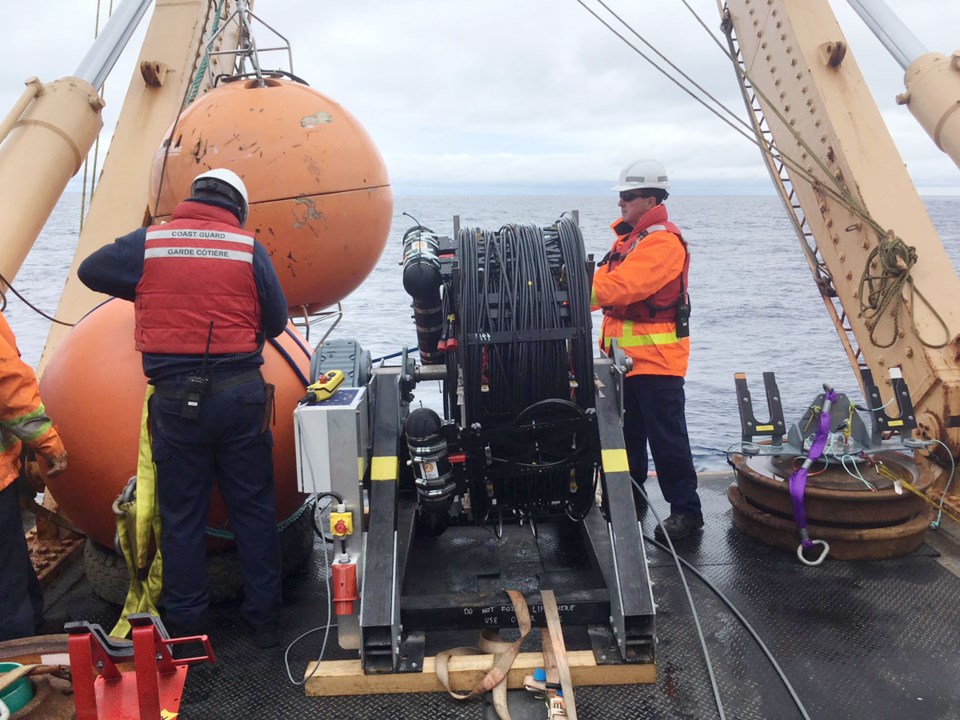UVic scientists have installed instruments at the bottom of the sea off Vancouver Island’s west coast, part of a hunt for subatomic particles called neutrinos.
Ocean Networks Canada, an initiative of the University of Victoria, installed the instruments last month to test whether the area is suitable for collection of data on neutrinos.
Benoit Pirenne, Ocean Networks executive director of user engagement, said the sea bottom is good for neutrino detection because it’s dark and it’s separated from Earth’s atmosphere where other particles might interfere.
“You want the darkness because when these particles interact with other particles they produce a little bit of light and we want to detect that light,” said Pirenne.
Neutrinos are subatomic particles tiny even when compared to other subatomic particles and carry no electrical charge. They are formed in large astrophysical events, nuclear fusion in a sun, super novae and usually in bursts. They travel in straight lines at near light speed and move through matter and across galaxies until they happen to strike another particle at which point they wink their little bit of light.
Ultimately, if Ocean Networks Canada becomes a site for neutrino observation it will team up with other sites, in Japan, the Mediterranean and Antarctica. By triangulating data with other sites, scientists can determine the direction of travel and the galactic origin of the neutrinos.
Ocean Networks Canada monitors the east and west coasts of Canada and the Arctic with arrays of ocean-bottom cables. Sensory instruments are connected to these cable arrays collecting data for a variety of studies.
The array is now being used to create an early warning earthquake sensing system. Oceans Network and Natural Resources Canada are installing the seismic sensors. Once completed, the system will be tested and handed over to Emergency Management B.C. by March, 2019. The provincial government has invested $5 million.
Pirenne said the latest investigation into the detection of neutrinos is a good demonstration of the array’s widespread usefulness. It has always been envisioned that the array of cables would offer research data in many fields: Biology, ocean chemistry, seismology and the detection of tsunami information.
The latest search for neutrino light flashes will likely be of assistance to biologists who wish to study ocean life at great ocean depths. Some of these creatures produce their own light, a process called bioluminescence. Neutrino investigators will have to screen out those biological flashes but ocean biologists will want to take a look.
“It’s often said: ‘One person’s noise is somebody else’s data,’ ” said Pirenne. “So marine biologists will be very interested in these other data that the other guys want to ignore.”
• To learn more about Oceans Networks Canada, including the chance to view live ocean video, go online to oceannetworks.ca.



